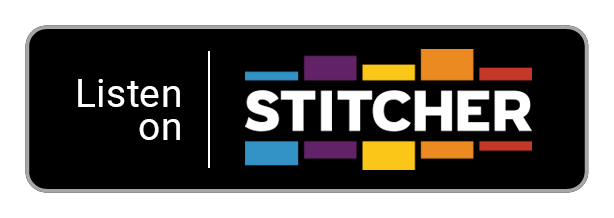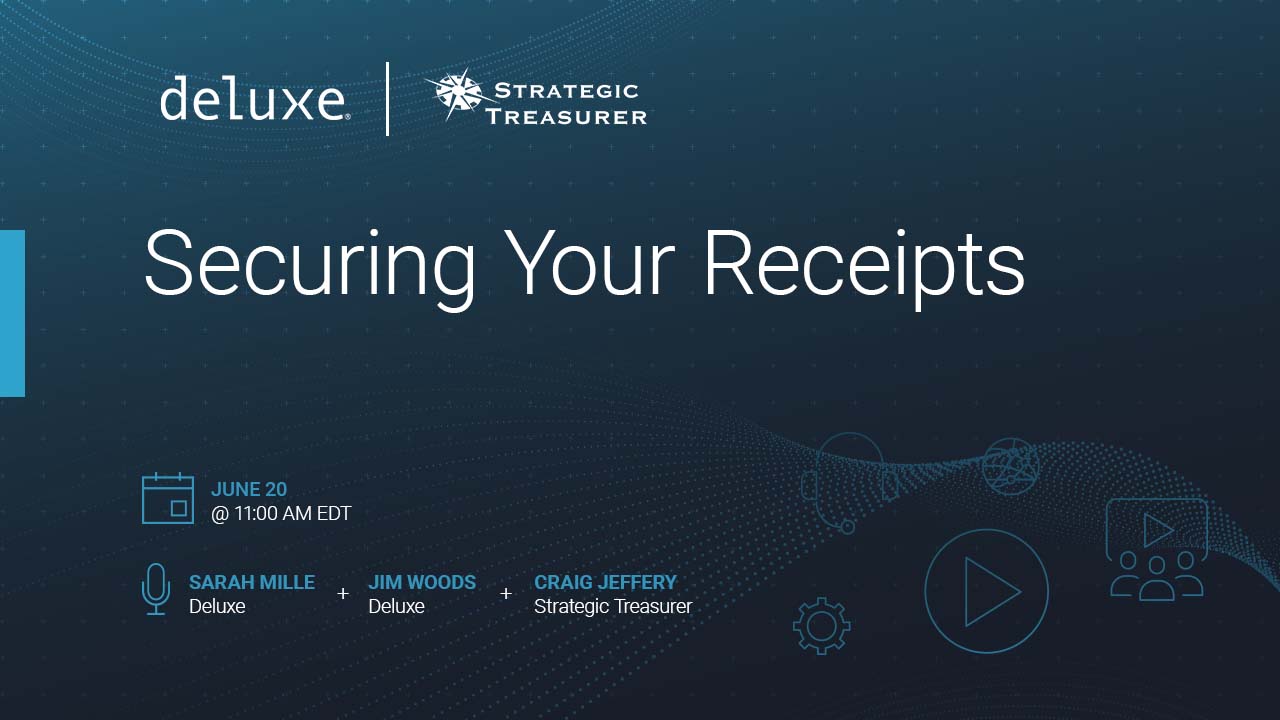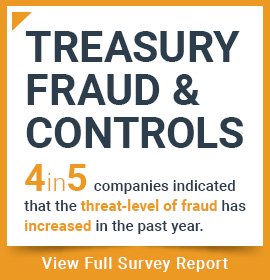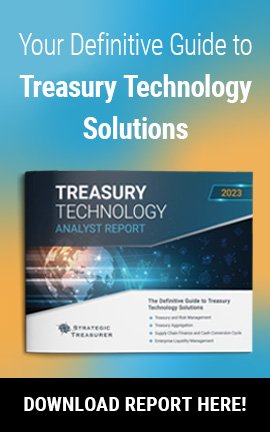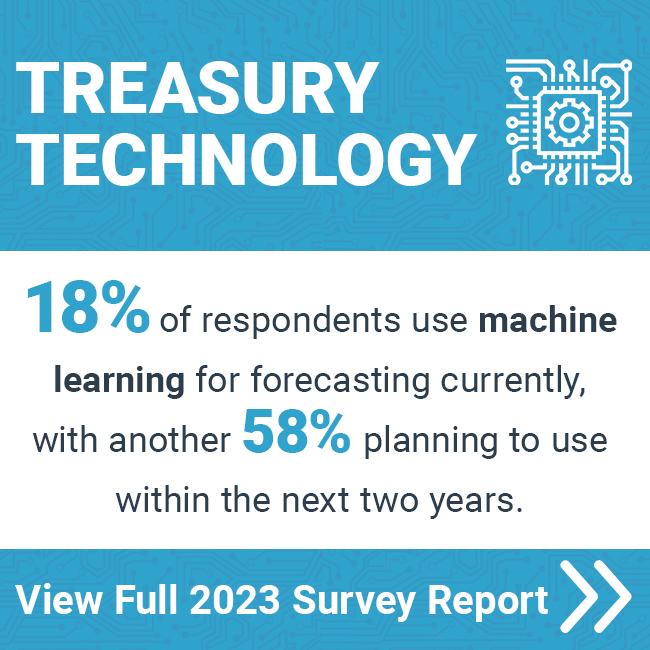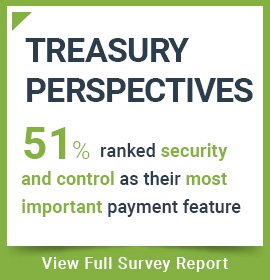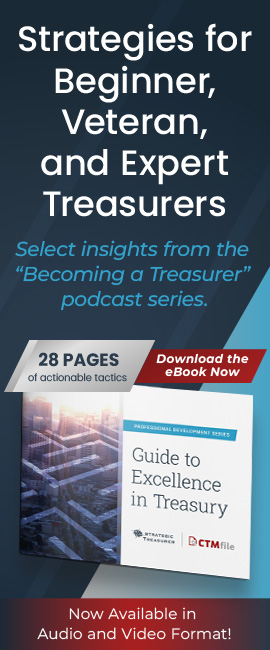
Episode 255
Exploring Next-Generation Payment Trends
Tune in to this discussion of trends, data, and industry statistics that shed light on the overall payer/payee experience and the transformative potential of next-generation payments.
Host:
Craig Jeffery, Strategic Treasurer


Speaker:
Mike Reed, Deluxe


Episode Transcription - Episode #255 - Exploring Next-Generation Payment Trends
Announcer 00:04
Welcome to the Treasury Update Podcast presented by Strategic Treasurer, your source for interesting treasury news, analysis, and insights in your car, at the gym, or wherever you decide to tune in.
Craig Jeffery 00:18
Welcome to the Treasury Update Podcast. This is Craig Jeffery. This episode is titled Trends in Next Generation Payments. And I’m here with Michael Reed from Deluxe. Michael, welcome to the Treasury Update Podcast.
Michael Reed 00:31
Thanks for having me.
Craig Jeffery 00:32
Michael, we’ve talked and met and had conversations in a number of different places. And I’d like to make sure that the whole audience knows what you do at Deluxe just so they have a background as we move through this concept of next generation payments. So what’s your role at Deluxe?
Michael Reed 00:48
At Deluxe, I lead the payments division. We have several divisions here that check business which has been around for a long time and the promotional solutions and data businesses. And I lead the digital payments business. And it’s really my job to find digital solutions to take the place of the checks today that are sent all over the country.
Craig Jeffery 01:08
Excellent. Let’s begin. You know, when you look at any type of digitization or next generation payments, there’s there’s certainly the shift from paper checks to more electronic or better digital items. But maybe maybe we could start with, what do you see are some of the key differences between consumer payments and corporate payments? Almost everyone has experience on the consumer payments side, on the corporate payments side, it might be a little bit different. Maybe you could start there.
Michael Reed 01:36
Certainly. So there has been a lot of attention paid to consumer payments, primarily because the consumer populations are so diverse. And the types of payments that consumers like to use are diverse, and businesses are are very incented to ensure that they are able to accept those different types of payments and a frictionless way so that their goods and services are able to be easily easily sent out. So logically, we’ve spent a lot of time particularly in the US market here, developing digital capabilities that allow us to accept payments online, in store, through mobile app, however anyone really wants to pay, and all of the processes behind the scenes to ensure that we’re able to reconcile those payments. And checks have been out of that ecosystem as an example for a very long time. Because the digital solutions are so far ahead. In business to business payments, it’s almost the opposite. The speed at which a payment happens isn’t necessarily the primary driver with which a transaction needs to occur, you know, in a consumer environment, the seller wants to know, am I going to get paid? And how quick you know? And is this going to work? Before I give my good or service away. And b2b payments, a lot of it happens behind the scenes, their invoices and other information that has to pass around for the payment to happen. And the person who’s sending that payment, they have certain needs, and then the person receiving the payment just really wants to get their money. The payer has primarily driven the way in which that ecosystem operates today. And it’s it would probably be surprising for most to know that in business, the business payments, over 60% of payments sent between businesses are paper based. And in the US, yeah, so that comes for a variety of reasons. But it’s primarily because the payer today needs a very rudimentary set of information they need an address, they know that the check is going to be able to be deposited and managed without without query from, from whoever they’re sending the payment to. And a lot of times they need to send information about what the checks for or why the value is there. And all of that can be communicated on paper and through paper, the mail, the post office can deliver it the cheque can be used to deposit it and a piece of paper can have information written on it that tells them what it’s for. And so that’s why today, a lot of these, these business to business payments are still sent using paper.
Craig Jeffery 04:09
Now I want to go back to your introduction because of the way you’re using the term payments. Now, AP group makes payments, a receivables group receives payments. When you talk about you’re in charge of the payments business, is that the sending or receiving? Is it both? Or how do you have you look at and describe the payment process? Right? There’s a sender and a receiver. What’s your take on that?
Michael Reed 04:35
Certainly. So within Deluxe, we have really two big ecosystems within the payments division. One is merchant services, which is that consumer based payment platform so we enable merchants to receive payments online, in store, through a mobile app using our gateways and back end technology. So I’m going to set that aside because that’s that’s not really the part of the business that we were just talking about. In the other part of the business, it’s really about b2b payments, we have a very big receivables business today, we handle the automation of payments for about $3 trillion in payments for companies who receive money today, helping them to reconcile those through the order to cash process. We are very good at helping businesses today to apply those monies that end up in their bank account. In studying those problems, we’ve built out disbursement capabilities that we believe are going to be important in the marketplace and help to digitize those payments that are today coming in that we’re managing as a receivable as a check. So we’re studying, we call it the jobs to be done framework, but our product team looks at, what is the what is the job that this paper is doing today that a digital platform isn’t doing? Why are we receiving so much paper? Why are we then having to digitize and manage all that paper? And could we bring a disbursements platform forward that would enable a sender, an AP department, to send that money digitally? And we call that the Deluxe Payment Exchange. So we really operate in that b2b payment space on both sides of that equation. But we’re really, really big and have a lot of scale in the in the receivables part helping receivables departments reconcile those payments?
Craig Jeffery 06:23
Yeah, both sides of the payment domain. Thanks. Thanks for that explanation of how you’re referring to that outbound and inbound payments. And when I look at b2b payments versus consumer payments, you started explaining some of that, I’ll just say a couple examples. Maybe you can talk to this concept. It’s like consumer payments are easier to automate in some ways, because it’s like it’s someone gets paid a person, a person or a business or consumer, they make a payment or consumer makes a payment to someone else. There’s no, there’s not the same type of issues on the corporate side, right? The corporate side is like we want to have dual controls. We need something that’s authorized. Somebody authorizes something someone approves it. It’s sent there’s there’s an accounting process where that typically is not happening on the consumer side. Are those some of the key reasons why b2b payments might be farther behind consumer payments, because there’s more involved in the process? Are there other things that would that would point to maybe slower adoption of the newest technology?
Michael Reed 07:24
As we, you know, those are all certainly concerns, the the areas that you pointed out. What we have found, as we were looking at why there are so many paper based payments still in in the marketplace on that b2b space, it really came down to three key variables. One variable was most of the businesses sending a payment, didn’t know if they would ever need to send a payment to that person again. So a lot of invoices and other things, property and casualty insurance payments, they’re hoping they don’t have to send many of those. Payroll for, you know, when someone is termination pay or other kinds of things, you know, they probably don’t have to pay that that employee again. Medical claims payments, out of network medical claims payments, the list goes on. But a lot of them they don’t want to store ACH, wire, or credit card information on someone that they don’t know if they’re going to ever need to pay again. So they then resort to the check, because the check is a known thing, they’re not going to get questions about it. And they don’t have to store any information, they provide all of the they provide the the recipient their information, and they can then take that to the bank and use it. So it’s kind of the inverse, because their information is on the piece of paper that’s going to the recipient, and that information is what’s being used to make the deposit and you know a lot of them, they take the picture of the cheque and it’s digitized from there. That’s one key piece of information, they don’t want to store ACH, wire, credit card information. The other was a lot of times they’re paying a different amount than what might be on the invoice. And they have to tell them exactly what it is they’re paying and why. And the the largest use case of that is in medical, in medical claims payments. If you go out of network, and you need to you’re seen by a doctor that’s out of your insurance company’s network, they don’t want a relationship necessarily with that clinic or that doctor’s offices, they don’t know that they’re ever gonna have to send money to them again. So they haven’t stored any credit card information or wire or ACH, but they also need to tell them what’s for so they can print the explanation of benefits is what it’s called the and they can print that and they can send it and reconcile that visit. So that was the second piece of information. The payment doesn’t always match the amount they need to tell them why. And the third is they usually have an address, but they might not have any other information. So you put those three things together and mailing it It is the easiest thing for them to be able to do.
Craig Jeffery 10:04
And much in the US is so many of our European and Asian friends don’t kid us but are merciless about why do you have so many checks such an advanced country, printing things on paper, how 1980 or 1970. But the way you describe it that way, it’s like, it’s pretty easy. It’s low friction. And like you said, we’re also imaging those things as soon as we can. And at least digitizing it to some extent for the for the collection process. I don’t know if there’s more things you want to say about the the friction points for b2b payments or issues that you see in the space? I know you’ve you’ve, you’ve touched on some to some extent. And if there’s more that you wanted to talk about, like where are the points of inefficiency or friction that you see in b2b.
Michael Reed 10:51
The only point that we didn’t talk about this specifically, but you reference just now is this the the irony, all of the data that we’re talking about that ultimately ends up on a piece of paper is starting in a system, so it’s already digital, they’re then taking that information and putting it on a piece of paper. And then for my receivables business, I’m taking all that information and scanning it and reading it, and putting it back into a digital format. So that we can then provide it back to the recipient, for them to then reconcile into their accounting software or, or ERP. So it’s digital, when it starts, and it’s digital, when it ends, but we we create this paper trail in the middle, that does create a lot of inefficiency overall.
Craig Jeffery 11:40
So Michael, you know, this, this concept of we want to move from inefficient processes to more efficient processes, and that almost always involve involves moving to more digital processes, on an end to end basis end to end, from the paying organization to the receiving organization. So I know sometimes we we say end to end to end to end. So it’s digital, throughout the handoffs, the start point, the recipient and the individual elements there. So what what do you see is needed here? And then I’ve got some thoughts on why certain processes are more inefficient than others. But maybe you could start there, what do you see as needed to move towards more efficient digital processes?
Michael Reed 12:24
You know, on the receivable side, there’s been quite a lot of work to mask, candidly the issues that are going on underneath. So as an example, we’ve got a receivables product today that with machine learning and artificial intelligence will learn how these payments are coming in, and will and will help to digitally apply those payments. But that’s, you know, 99% of payments, now we call it straight through process where they receive it, we can manage it all the way through that 1% is still a lot of a lot of friction and a lot of payment. So even though there’s been really great effort and activity, even by the likes of us, you know, to deliver new and better creative things, their treasures are still telling us that that automation and, and the need to do more to take this friction out is needed. Because with the additional modalities, the additional types of payments, you know, credit card, ACH, and wire been out for a long time, but then you have multiple types of credit and debit. And then you have wallets that are coming in and now maybe crypto and the different things like that. So the modalities continued to expand that different, whether consumers or businesses might want to use that just creates, you know, exponential challenges there. So, you know, that’s, that’s one aspect of it. So that’s why we started working on the disbursement side. So how do we help to get the payment to go out in a, in a frictionless way from the start? And so it starts by sometimes entering into a communication that says I owe you some money. How do you want to receive that money? So our DPX, the Deluxe Payment Exchange platform, we are moving money, we’re moving data, but we’re also enabling a communication that creates a directory that tells us how the payers in the payers want to relate. And it’s going to take those types of those types of technologies coming together where you’re able to match the payer and the payee with information before the payment goes out rather than trying to reconcile that payment after you’ve received it.
Craig Jeffery 14:36
Michael, that’s really interesting you know as you as you mentioned, tackling it before payments made so is this a without getting into like a product description is just like hey, here’s here’s what my invoice is going to be or invoices. Here’s what I’m when I’m billing you for here’s what I’m gonna pay for, well before a payment goes on or what’s what’s been done before the payment? You know, typical payment says paying this much money for these five invoices, here’s some short pay information, how is that being done ahead of time?
Michael Reed 15:06
So it starts with an email that goes from the payer to the payee. And with a simple message that I need to send you some money, how would you like to receive it? It starts out in this particular case, as you know, the payer is assuming it’s a check payment. So in the payers mind, I need to send you a payment. And it’s going to look and feel like a check, unless you tell me you would like it some other way. They also though, need to at the same time as the payment, communicate that information on what it’s for, and a digital container that can allow them or is in a digital format that can allow them to take that information and import it into their system, much like happens at you know, when we digitize it and send it to them, and it gets imported. So it’s the same fundamental process of getting the money and getting the information into the system. The first step though, is to get that paper loop out, rather than it starting digital moving into a paper environment, coming back into digital for them to then put it into their system, can we just send a notification that allows them to pick how they would like to receive it and we get rid of the paper part of that equation to begin with, which is where we started our journey at the Deluxe Payment Exchange.
Craig Jeffery 16:19
So you’re intentionally cannibalizing your check business, perhaps.
Michael Reed 16:23
We are we are focused on solving our customers problems. And we feel like if they’re wanting to send or receive a cheque from us, that’s great if they would do that in an alternative that we can also provide them that might be a more sustainable growth area of the business, that’s even better. So so we are we are primarily what what Deluxe sends out are the checkbooks, right, we send 150,000 I think checkbooks packages a day, which are the handwritten checks, a lot of these are the print and mail checks that we happen to be going after, in this particular case, where they’re mailed, they’re printed and mailed.
Craig Jeffery 17:04
Thanks for that, that description and some other color there. You know, when, when we think about or when I think about efficient process inefficient processes, inefficient processes tend to be manual, they tend to have a lot of handoffs, that creates a lot of defects, defects or death to an efficient process. And so paper tends to fall into that category. A process is designed not to look at the end to end perspective tends to fall into that area. Is that Is that how you look at it? Are there other things that we should be thinking about in this move to more efficient digital processes? Anything else?
Michael Reed 17:43
As with any manual process, and, you know, paper based process, and you know, when you’re converting things from one systems to others, they’re certainly defects. The main problem that our receivables department heads are telling us that they want to solve is the detective work that their teams have to do to go find out why they’ve received money and how they apply it. So to the extent we can have information and money move at the same time, that can be easily consumed into these systems that reduce that detective work, the happier our receivables, you know, customers are, and so that’s where we are on the receivable side, that’s what we aim to do is to get them however they want to receive money with whatever information they need, ensure that it can come in and the most reliable, efficient way to reduce that detective work.
Craig Jeffery 18:37
So the the worst scenario might be a manual process that’s filled with errors. The next one would be a manual process is accurate, or people typing it in. And maybe that’s tied with a digital process that has lots of errors. So people have to call, you know, receivables has to call the payables group and say what are you paying for because nothing matched up. That creates a defect. And then the best is digital processes that are highly accurate that you can manage. Is that is that the is that the sequence, or do you look at it differently?
Michael Reed 19:08
That’s generally the sequence. The one aspect though that is, is a real challenge for a lot of our customers is also time how much time these manual these take. So imagine if you’re receiving if you’ve if you’ve loaned money for an auto and you’re expecting payments to come in, and somebody goes to their bank and they go to their bill pay system, and they say oh, I need to pay my bank and it’s due today I’m gonna pay it today. Well, it may take 3, 5, 10 days for that payment to get to leave the bank and to get to the recipient to then get processed and then get applied well by then you may have gone from into the past the grace period where then a late fee is assessed and you now have two, there’s both the payer and the payee, both their customers are unhappy. The payer, they’re calling their bank and saying I paid this today, why did it take you 10 days to get it there? Then they call their, whoever they have their loan through and said I wanted this $50 late fee to go away, because I did pay it on time, but the bank didn’t get it to you on time. That is a very big, that is a very big issue that today, this manual process and digitizing and everybody thinks it’s digital because they’re going to their bank portal. And they’re putting it in and there’s so but it’s still a paper check that’s going out, that’s going to a lockbox operator that’s getting scanned back into a system that is then getting applied. So we are you know, so we’ve that’s a problem that we’re studying, and that we’re bringing capabilities to help to solve.
Craig Jeffery 20:52
I’d like to go through some use cases, the application of some of these concepts, you know, where we, where we take an end to end view where you’re looking at this digital journey, the what are the trends in next generation payments? It’s certainly not just transferring value, but there’s information too. That’s part of that, at least that’s what you’ve been talking about. I know you have some some use cases that can help give some color put some put some background on on that for us.
Michael Reed 21:19
Well, we’ve we’ve talked about few of them, we’ve been going through the the most prevalent is that medical is the medical use case, you’re on vacation, you sprained your ankle, you go to the local clinic, it’s out of network, you pay your out of network copay, they then collect your insurance information you leave. Well, the process of reconciling that really is just starting. So they send their bill to the insurance company, the insurance company says no, I’m not actually going to pay that amount, I’m only going to pay this amount, they have to send the information back, they send payment. And that all happens generally through paper today. Because that clinic and that insurance company don’t have a relationship, and they don’t ever know if they’ll need one. So that’s a very prevalent one kind of an ironic one is property and casualty insurance payments. So in property and casualty insurance payments, you know, I own a house, and I may own it with someone else, my wife, and we both are on the deed, and we’re both on the insurance policy and we’re both on the loan, well, a tree falls on my house and I need to receive money. Well, they know who I am, I’m paying them money. Obviously, they don’t necessarily know how I want to receive money. And they need to know that both my wife and I are accepting this $3,000 payment to fix the roof. Well, the only way today that’s very easy for them to do that without you know, blockchain or digital contracts as a check. Because we both have to endorse the check, the bank validates it, it goes into a joint account, the insurance company washes their hands of it, they’re like, great. both Michael and his wife, in this case, know that they received the money, I’m done. And so in that case, the check it’s not about it’s not about explaining what it’s for, and about getting me the money because they probably have other mechanisms to do that. But that the this piece of paper, you know, acts as almost a a contract, that once I sign it, I’ve now released additional liability or done other things.
Craig Jeffery 23:22
So how has that changed in the new environment?
Michael Reed 23:26
So in? You know, candidly, we haven’t exactly solve that problem yet, because it would require it would require a technology probably like a blockchain, where you could send the payment, you could do a smart contract and the blockchain. So you know, there is technology today that absolutely could solve this. It’s not an unknown problem in that perspective. And we know exactly how we could in, in principle, solve it using blockchain. The question is, how do we were at what where do you put the blockchain in the process that then that fits in with all of these other pieces, you still have to move the money, you still have to send the information necessary to manage the payment, now you need to get a smart contract introduced. So you know, we’re working through options and talking to customers about how they might see that happening. Maybe they do that part of the process and supplement it with ours, but it just, it’s just complicated.
Craig Jeffery 24:23
Yeah, that’s, that’s interesting. You know, it’s like, most companies have gotten very used to the digital signing, when we send agreements, like it gets routed around instead of the horrible world of routing paper around and getting wet ink on those documents. It’s, it’s using that type of technology, everyone, everyone signs it. Everyone gets their version of the agreement, and it’s digitally and hashed and signed. And some of those some of those systems have ways of, you know, I guess what you’re saying is, that type of process linked with payments means when something has occurred, the payment moves with it. Everyone’s in agreement with them, it’s, it’s a, everyone has the same version of the truth because the smart contract moves that. So I’ll be, I’ll be really interested to see, to see how you guys solve that very specifically, in the near future that that sounds quite, quite interesting,
Michael Reed 25:15
Right, you’re introducing now a digital workflow in the midst of also needing to send information that they need to reconcile the payment and the money. So it’s just a third rail, that you’re now having to introduce into the equation. It doesn’t have to be blockchain to your point, there’s other ways to do it. The point is, they need to know that both my my wife and I, in this case, know that they’re about to send us money, and it’s going to get used for the purposes of replacing the roof.
Craig Jeffery 25:42
So over time, and this is a, this is a bit of a theoretical question. Over time, the focus on the payment part of the workflow might become less, because people are trying to complete the transaction or the actual workflow. I’m providing services, you’re rendering compensation, whatever the activity is, the workflow becomes more important than the payment side, perhaps.
Michael Reed 26:08
I absolutely believe that. Moving the money, there are so many mechanisms to move money, and there’s new mechanisms coming. Real time payments, Faster Payments, you know, FedNow, what have you. Moving the money is not the hardest part. Might not be easy, but it’s not the hardest part. The hardest part is making sure that you’re sending it to the person that you’re expecting to send it to, that they know what it’s for, and how they’re going to apply it, that if there’s information you need to communicate with it, you can communicate the information. And if you need a release, or you need additional workflow information available to you to make sure that when they take possession of these funds, that they are releasing, you have obligations or what have you, it’s all of those pieces that are more complicated than just moving the money.
Craig Jeffery 26:58
Is your title in the future going to be you’re in charge of workflow? When when will you lose the payments name out of your title?
Michael Reed 27:08
I don’t I don’t ever see that happening. Because ultimately, the job to be done is to exchange value between, you know, buyers and sellers or payers and payees. And it’s the mechanism with which you’re. What do you have to have around your processes to ensure that you’re the best at not just moving the money, but ensuring that that these different use cases are solved in the technology that you’re bringing forward? That make it, you know, you’re the logical choice. But the end result is you’re you’re wanting to move money between buyers and sellers, payers and pays.
Craig Jeffery 27:46
That’s like almost the ultimate step, there’s value transferred upon the culmination of the trade activity. So in terms of a wrap up, or final thoughts, to this, this episode called Trends in Next-Generation Payments, any any final thoughts you want to emphasize, if you’ve already covered them, or anything you want to leave with the audience?
Michael Reed 28:09
You know, we tell our team all the time, that complex is okay, complicated is not this stuff is always going to be complex. There’s a lot of variables, a lot of different use cases, there’s people that are at our bank, there’s people that are underbanked, there’s businesses that want to get paid certain ways that need information, certain ways, they all use different accounting systems, they all use different ERPs. So it’s gonna be it’s going to be complex. And we believe, I believe, by studying the job that, you know, different instruments are doing, whether it’s a piece of paper, whether it’s the post office, whether it’s FedNow, and like moving money, you know, at this, you know, immediately between bank accounts, it’s really what, what’s the job? And then what are the adjacent jobs that have to have to go alongside it? You can have a carpenter, but you can’t build a house with just a carpenter. So how do we have all of that laid out? So that’s what we focus on. We spend a lot of time on it, we talk to our customers, we talk, we keep our ear to the ground on the market, we look at where things are headed. And we use the scale that we have to to try to influence change and bring forward relevant solutions for today, but also, you know, steering towards where things might be tomorrow.
Craig Jeffery 29:29
Well, thanks so much, Michael. Really appreciate you joining me on the Treasury Update Podcast.
Michael Reed 29:33
Thank you.
Announcer 29:37
You’ve reached the end of another episode of the Treasury Update Podcast. Be sure to follow Strategic Treasurer on LinkedIn. Just search for Strategic Treasurer. This podcast is provided for informational purposes only, and statements made by Strategic Treasurer LLC on this podcast are not intended as legal, business, consulting, or tax advice for more information visit and bookmark StrategicTreasurer.com.
Subscribe to the Treasury Update Podcast on your favorite app!
Related Resources
This session will explore how you can assess the security processes and standards for payments flowing in through your lockboxes (paper and electronic). What are the common issues that create problems? How can these issues be controlled or mitigated? New security standards are needed to provide reasonable care and control over your inbound payments.



